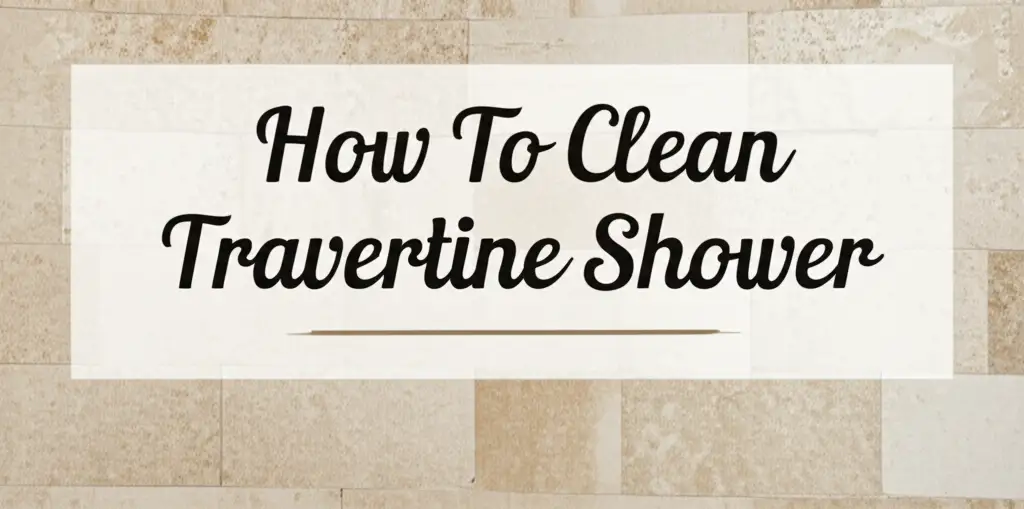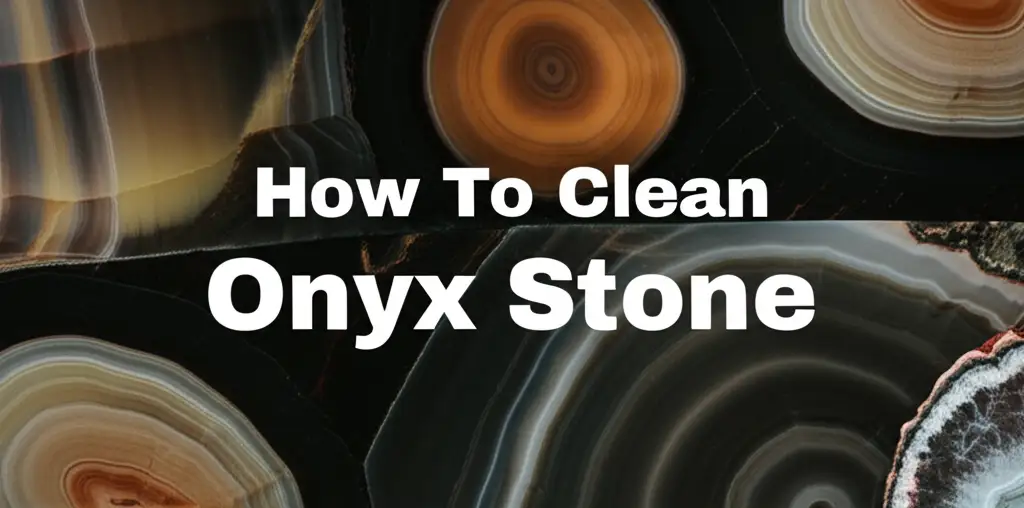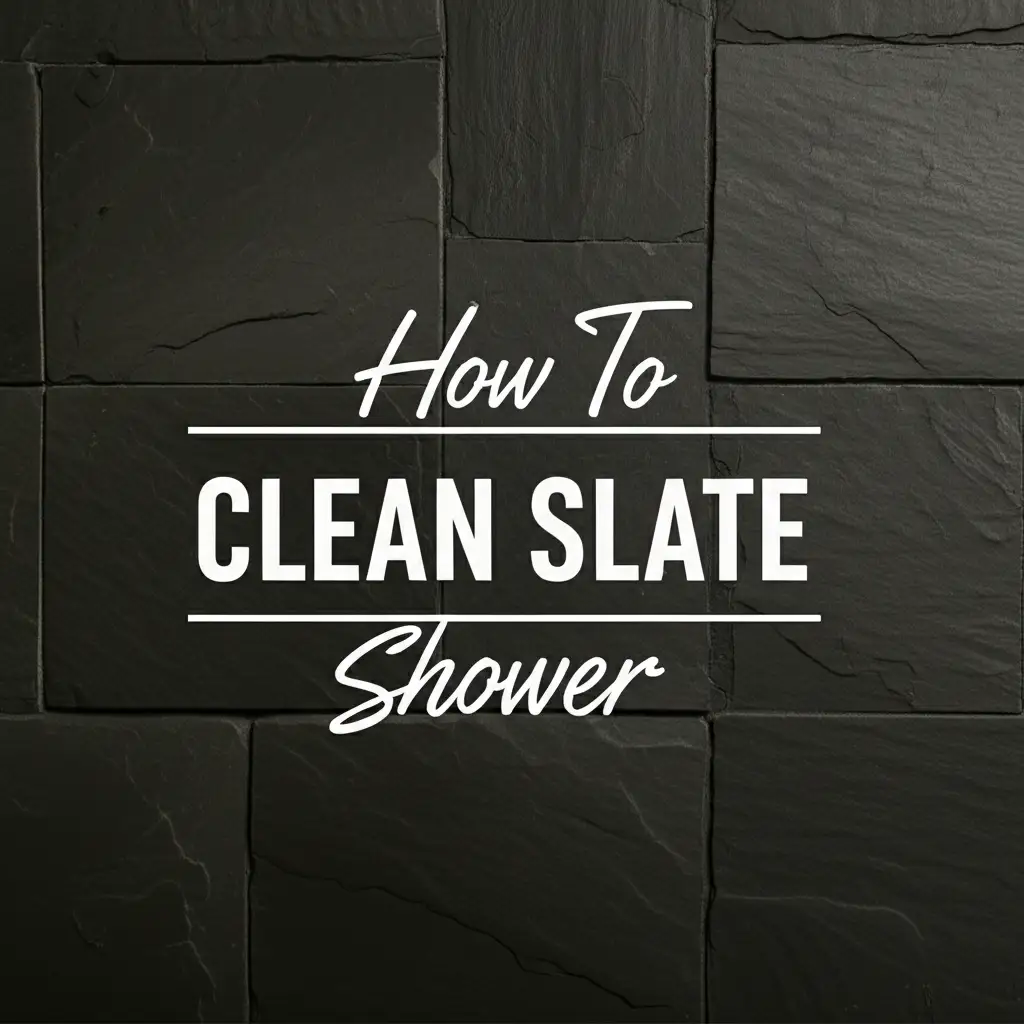· Home Cleaning · 16 min read
How To Clean Travertine Shower

Clean Your Travertine Shower: A Simple Guide
Travertine showers bring natural beauty to any bathroom. Their unique patterns and warm tones create a spa-like feel. However, keeping this natural stone clean requires specific methods. Travertine is different from ceramic tiles or fiberglass. It is a porous stone, sensitive to many common cleaners. Improper cleaning can cause damage, etching, or dullness. My goal is to help you keep your travertine shower looking its best. This guide shows you how to clean travertine shower surfaces safely. We will cover daily care, routine cleaning, and how to fix common problems. You will learn about the right tools and products. We will also discuss the importance of sealing your stone. By following these simple steps, your travertine shower will stay beautiful for many years.
Takeaway
To effectively clean your travertine shower:
- Always use pH-neutral cleaners made for natural stone.
- Avoid acidic cleaners like vinegar, citrus, or harsh abrasives.
- Clean your shower regularly to prevent buildup.
- Seal your travertine stone to protect it from water and stains.
- Address spills and issues quickly.
To clean a travertine shower, use a soft cloth or sponge with a pH-neutral stone cleaner. Gently wipe or scrub surfaces. Rinse thoroughly with clean water. Dry the stone completely to prevent water spots and buildup. Regular cleaning and proper sealing protect the stone.
Understanding Travertine: Why It Needs Special Care
Travertine is a natural stone. It forms from mineral deposits in springs. This stone is a type of limestone. It features unique pits and holes. These natural characteristics give travertine its distinct look. Many people love travertine for its warm colors and earthy feel. It makes a beautiful addition to any shower space.
However, travertine is also a porous stone. This means it has tiny holes and channels. These pores can absorb liquids easily. This makes travertine vulnerable to stains. It also reacts poorly to acidic substances. Common cleaners, like those containing vinegar or citrus, can cause damage. These acids etch the stone’s surface. Etching removes the stone’s shine. It leaves dull spots. Strong chemicals can also strip away the stone’s sealant. A stripped sealant makes the stone even more prone to damage.
Proper care preserves the stone’s look. It keeps the shower clean and safe. Understanding travertine’s nature is the first step. You learn why special cleaning products are necessary. You also learn why you should avoid specific chemicals. For example, cleaning a travertine tile floor or shower wall needs a gentle touch. It is different from cleaning other types of tiles. Learn more about how to clean travertine tile in your home. This helps you understand stone care.
Travertine in a shower sees constant water and soap. This makes it prone to soap scum and hard water stains. These issues need careful attention. Harsh scrubbing can also scratch the surface. Using the wrong tools can damage the stone. Always choose soft brushes or cloths. Avoid anything abrasive. My advice is to treat your travertine like a delicate piece of art. Gentle care keeps it beautiful. This approach ensures your shower remains a luxurious space. Knowing these facts helps you choose the right cleaning path.
Essential Tools and Safe Cleaning Solutions for Travertine
Cleaning travertine effectively starts with the right tools. You do not need many items. The key is to choose soft and non-abrasive materials. My go-to tools include soft-bristle brushes. These are good for scrubbing grout lines and textured areas. Microfiber cloths are excellent for wiping surfaces. They pick up dirt without scratching. A spray bottle helps apply cleaners evenly. A squeegee is also a must-have for daily water removal. Using these tools helps protect your stone.
Choosing the correct cleaning solution is critical for travertine. The most important rule is to use pH-neutral cleaners. These cleaners have a balanced pH level. They do not react with the stone. Many commercial cleaners are made for natural stone. Look for labels that say “pH-neutral” or “safe for natural stone.” I always check product labels carefully. This ensures the cleaner will not damage the travertine. These cleaners effectively remove soap scum and dirt. They do not strip the stone’s sealant.
You can also make a gentle homemade cleaner. Mix warm water with a small amount of mild dish soap. This solution works well for light cleaning. Ensure the dish soap is also pH-neutral. Test any new cleaner in a small, hidden area first. This check confirms it will not harm your stone. Baking soda is another safe option. You can make a paste with baking soda and water. This paste helps lift stubborn stains. Learn more about how to clean a shower with baking soda for other surfaces.
Never use acidic cleaners on travertine. This includes vinegar, lemon juice, or harsh bathroom cleaners. These products cause etching. Etching creates dull, permanent spots. Even some “natural” cleaners are too acidic. For example, while vinegar is great for many cleaning tasks, using how to clean a shower with vinegar on travertine is a bad idea. It will damage the stone. Abrasive cleaners, like scouring powders, also cause scratches. Avoid rough sponges or steel wool. They will scratch the travertine surface. Always stick to soft cloths and pH-neutral solutions for safe cleaning.
Daily Habits for a Spotless Travertine Shower
Maintaining a beautiful travertine shower does not require constant deep cleaning. Good daily habits make a big difference. These simple steps prevent buildup. They keep your shower looking fresh. I recommend adopting a routine after every shower. This routine saves time and effort later. It also extends the life of your stone.
First, always squeegee your shower walls and doors after each use. Water contains minerals. When water dries on travertine, these minerals leave deposits. These deposits become hard water stains. A squeegee removes most of the water. This prevents mineral buildup. It keeps your stone cleaner longer. I find this one step to be the most impactful. It dramatically reduces the need for heavy scrubbing.
Second, wipe down surfaces with a soft towel. After squeegeeing, some water remains. Use a clean, dry microfiber cloth. Wipe down the travertine walls, floor, and fixtures. This removes any remaining moisture. It also helps prevent soap scum from forming. Soap scum mixes with water to create sticky residue. Removing water prevents this issue. This simple wipe-down also removes stray hairs and minor dirt. It keeps the shower bottom clean. For tips on cleaning the base of your shower, check out how to clean bottom of shower.
Third, ensure good ventilation in your bathroom. Humidity and moisture encourage mold and mildew growth. Travertine, being porous, can absorb moisture. This creates a perfect environment for mildew. Turn on the exhaust fan during and after your shower. Keep the bathroom door open if possible. Proper airflow helps surfaces dry faster. This prevents excess moisture from sitting on the stone. It reduces the chances of mold developing.
Fourth, address spills immediately. If you spill anything on your travertine, clean it up right away. This is especially true for acidic products. Perfumes, colognes, or some body washes can be acidic. Blot the spill with a clean cloth. Then, wipe the area with a damp cloth and dry it. Quick action prevents stains and etching. Following these daily habits keeps your travertine shower in excellent condition. They make your weekly cleaning much easier.
Step-by-Step Guide to Cleaning Your Travertine Shower
Routine cleaning of your travertine shower is simple. You just need the right products and a gentle approach. I follow these steps to keep my travertine sparkling. This method is safe for the stone. It effectively removes everyday dirt and light grime.
First, prepare your shower. Remove all bottles, sponges, and other items from the shower area. This gives you clear access to all surfaces. Rinse the entire shower with warm water. This helps to loosen any loose debris. It also prepares the stone for the cleaner. The water helps the cleaner spread evenly.
Next, apply your pH-neutral stone cleaner. You can use a commercial travertine cleaner or a mild dish soap solution. Mix about one teaspoon of mild dish soap into a spray bottle filled with warm water. Spray the cleaner generously over all travertine surfaces. This includes walls, floor, and benches. Let the cleaner sit for a few minutes. This allows it to break down soap scum and dirt. Do not let the cleaner dry on the stone. If it starts to dry, mist it with a little water.
Then, gently scrub the surfaces. Use a soft-bristle brush or a non-abrasive sponge. Work in small sections. Scrub in circular motions. Focus on areas with more buildup, like the floor or lower walls. Be gentle. Do not use too much pressure. Over-scrubbing can damage the stone or its sealant. For cleaning grout lines, a smaller grout brush works well. Travertine showers also have grout. Keeping the grout clean is important for the overall look. Find more tips on how to clean grout in shower areas.
After scrubbing, rinse the entire shower thoroughly. Use clean, clear water. Start from the top and work your way down. Ensure all cleaning solution is rinsed away. Residue can attract more dirt over time. Once rinsed, dry all travertine surfaces immediately. Use a clean squeegee followed by a microfiber cloth. Drying prevents water spots. It also helps preserve the stone’s sealant. This simple process keeps your travertine looking clean and protects its surface. This routine is similar to cleaning any tiled shower, but with more caution regarding the cleaner type.
Tackling Stubborn Stains and Buildup on Travertine
Sometimes, your travertine shower needs more than routine cleaning. Stubborn soap scum, hard water stains, or mold can appear. These issues require specific, gentle treatments. My approach focuses on effective stain removal without harming the stone.
Removing Soap Scum
Soap scum looks like a cloudy, white film. It builds up from soap, body oils, and minerals in water. For light soap scum, a pH-neutral stone cleaner often works. Spray the cleaner and let it sit for a few minutes. Then, gently scrub with a soft brush or sponge. Rinse well. For heavier soap scum, make a paste with baking soda and water. Apply the paste to the affected area. Let it sit for 15-30 minutes. The baking soda is a mild abrasive. It helps lift the scum. Gently scrub with a soft brush. Rinse thoroughly and dry. Never use harsh scraping tools. They can scratch the stone.
Dealing with Hard Water Stains
Hard water stains appear as white, chalky deposits. These are mineral buildups from water evaporation. For these stains, avoiding acidic removers is key. Instead, try a poultice. Mix baking soda with a small amount of hydrogen peroxide. Create a thick paste. Apply this paste over the stain. Cover it with plastic wrap. Tape the edges to seal it. Let it sit overnight, or for 12-24 hours. The poultice draws out the minerals. Remove the plastic and let the paste dry. Once dry, scrape it off gently with a plastic scraper. Rinse the area. Repeat if needed. Specialized hard water removers for natural stone are also available. These are non-acidic.
Cleaning Mold and Mildew
Mold and mildew show as black or green spots. They thrive in damp, warm shower environments. It is important to remove them safely. Avoid bleach on travertine. Bleach can strip sealants and discolor the stone over time. Instead, use a solution of hydrogen peroxide. Mix equal parts of 3% hydrogen peroxide and water in a spray bottle. Spray the moldy areas. Let it sit for 15-30 minutes. Hydrogen peroxide kills mold spores. Gently scrub with a soft brush. Rinse the area thoroughly with water. For persistent mold, a special non-acidic mold cleaner for natural stone can be used. Address mold promptly. This prevents it from spreading and keeps your shower healthy. For more general tips, check how to clean mold in shower in any bathroom.
The Importance of Sealing and Resealing Travertine
Sealing travertine is not an option; it is a necessity. Travertine is a porous stone. Its natural pits and channels can absorb liquids. Water, soap, dirt, and stains can penetrate deep into the stone without a good seal. This makes cleaning much harder. It also makes the stone more prone to permanent damage. A sealant acts as a protective barrier. It fills the tiny pores in the stone. This prevents liquids from soaking in.
A good seal helps in several ways. First, it makes your travertine shower much easier to clean. Dirt and soap scum sit on the surface. They do not get absorbed into the stone. This means you can wipe them away easily. Second, sealing protects against staining. Spilled liquids, even acidic ones, will bead up on the surface. This gives you time to wipe them away before they can cause etching or stains. Third, it extends the life and beauty of your stone. Properly sealed travertine resists deterioration. It maintains its natural luster for longer.
How often should you seal your travertine? This depends on how much the shower is used. It also depends on the quality of your sealant. As a general rule, I recommend resealing your travertine shower every 1-2 years. You can perform a simple test to check your current seal. Drop a few beads of water onto the stone surface. If the water beads up, your seal is still good. If the water soaks into the stone and darkens it, it is time to reseal.
The sealing process is straightforward. First, clean the travertine thoroughly. Make sure it is completely dry. Apply the stone sealer according to the product instructions. Most sealers are applied with a clean cloth or sponge. You usually wipe it on, let it sit for a specific time, then wipe off any excess. Always work in a well-ventilated area. After sealing, allow the stone to cure. This drying time ensures the sealant bonds properly. Proper sealing is the most important step in protecting your travertine investment. It ensures your shower stays beautiful and easy to maintain.
Maintaining Your Travertine Shower for Lasting Beauty
Beyond regular cleaning and sealing, long-term maintenance ensures your travertine shower remains beautiful. These proactive steps protect your stone. They also help you address small issues before they become big problems. I believe in a holistic approach to stone care.
First, conduct regular inspections of your shower. Take a few moments each week to look closely at your travertine. Look for any signs of wear. Check for new cracks, chips, or areas where the sealant might be failing. Pay attention to changes in color or texture. Early detection of issues allows for quick fixes. For example, a small chip can be filled before it gets bigger. Loose grout can be re-grouted. This prevents water from getting behind the stone.
Second, always address spills and incidents quickly. I cannot stress this enough. Travertine reacts fast to acidic substances. If a product not safe for stone falls on your shower floor or wall, clean it immediately. Blot, do not wipe, to prevent spreading. Then, clean the area with your pH-neutral cleaner. Rinse and dry. This fast action prevents etching or deep stains.
Third, maintain your shower’s caulking. Caulking seals the joints in your shower. It stops water from seeping into walls or subfloors. Over time, caulk can crack or degrade. This creates openings for water. Inspect your caulk lines regularly. If you see cracks or moldy spots, consider re-caulking. Proper caulking protects your shower structure. It also prevents mold growth in those areas. You can find guidance on how to clean caulking in shower to maintain it.
Fourth, choose your shower products wisely. Some shampoos, body washes, and hair dyes contain harsh chemicals. These can be damaging if left on travertine. Try to keep these products off the stone surfaces. Store them in caddies or shelves. Rinse product residue off the stone immediately after use. Use non-acidic shower cleaners for general cleaning. By integrating these habits, you ensure your travertine shower remains a stunning feature in your home for many years. This proactive care saves you time and money in the long run.
FAQ Section
Can I use bleach on travertine?
No, avoid using bleach on travertine. Bleach can be too harsh for natural stone. It can strip the sealant. It may also cause discoloration or damage to the stone’s surface over time. For mold, use hydrogen peroxide or a pH-neutral mold cleaner. These options are safer for your stone.
How often should I clean my travertine shower?
Perform a quick daily wipe-down and squeegee after each use. This prevents mineral and soap scum buildup. For routine cleaning with a pH-neutral cleaner, aim for once a week. Deep cleaning and resealing should occur every 1-2 years, or as needed based on use.
What causes travertine to etch?
Etching on travertine occurs when acidic substances come into contact with the stone. Travertine is calcium carbonate. Acids react with it, dissolving the surface. Common culprits include vinegar, lemon juice, harsh bathroom cleaners, and some shampoos. Always use pH-neutral cleaners to prevent etching.
How can I test if my travertine is sealed?
To test your travertine’s seal, drop a few small beads of water onto the stone surface. Watch closely for about 10-15 minutes. If the water beads up and sits on top of the stone, the seal is still effective. If the water soaks into the stone and darkens it, it is time to reseal.
Is it possible to repair etched travertine?
Light etching on travertine can sometimes be repaired. You can use a stone polishing compound designed for natural stone. This may restore some of the shine. For deep etching or significant damage, professional restoration is often necessary. A stone professional can grind and polish the surface.
Are commercial travertine cleaners safe?
Yes, many commercial travertine cleaners are safe. Always choose products specifically labeled as “pH-neutral” or “safe for natural stone.” Read the product ingredients list. Avoid any cleaners containing harsh acids, ammonia, or abrasive particles. Testing on a small, hidden area first is always a good idea.
Conclusion
Keeping your travertine shower clean and beautiful is achievable. It simply requires understanding the stone’s unique needs. We have learned that travertine needs gentle care. It does not react well to harsh chemicals or acidic cleaners. My focus has been on safe, effective methods. You now know the right tools to use. You also understand the importance of pH-neutral cleaners. Daily habits, like squeegeeing and drying, play a big role. They prevent tough buildup.
Routine cleaning with a mild solution keeps your shower sparkling. For stubborn stains like soap scum or mold, specific gentle treatments work best. Hydrogen peroxide is a safer alternative to bleach for mold. Baking soda pastes help with stains. Most importantly, remember to seal your travertine regularly. Sealing creates a protective barrier. This barrier makes the stone resistant to stains and water damage. It simplifies your cleaning efforts.
By following these guidelines, you protect your travertine investment. You maintain its stunning appearance for years to come. Your travertine shower can remain a luxurious and inviting part of your home. Embrace these cleaning and maintenance practices. Enjoy the natural beauty of your pristine travertine shower.
- travertine cleaning
- shower maintenance
- stone care
- natural stone




